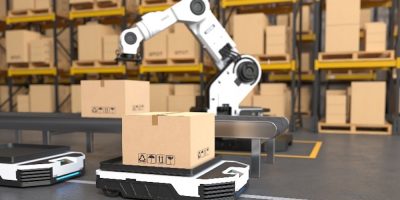Open source robot OS is available on iWave’s SBCs
Single board computers (SBCs) from iWave are equipped with the open source robot meta operating system ROS 2 on Ubuntu 20.04. The SBCs are powered by i.MX 8QM, i.MX 8M Plus and i.MX 8M Mini applications processors.
The OS performs functions such as hardware abstraction, low level device control, implementation of commonly used functionality, message passing between processes, and package management. ROS also includes tools and libraries for acquiring, constructing, writing, and running code across multiple computers.
Since it was introduced, Ubuntu has been the primary platform for ROS. ROS 2 on Ubuntu 20.04 is now available on the iWave’s portfolio of SBCs which support all necessary interface connectors like Gigabit Ethernet, USB 2.0 and USB 3.0 connectors, with PCIe ports to provide flexibility and adaptability for a variety of applications. They also have on-board HDMI 2.0, MIPI CSI and MIPI DSI connectors, LVDS ports and audio jack making them suitable for specific video or single processing applications.
Key features of ROS 2
ROS 2 builds on the success of ROS 1 as a standard software platform, used in a wide range of robotics applications around the world today, taking developers from research and prototyping to deployment and production, said iWave.
ROS provides functionality for hardware abstraction, device drivers, communication between processes over multiple machines, tools for testing and visualisation. It is a runtime and communication protocol that allows developers to design complex software without knowing how specific hardware works.
ROS 2 is ready for use across a range of robotics applications, from indoor to outdoor, home to automotive, underwater to space, and consumer to industrial.
The ROS 2 platform runs on Linux, Windows, and macOS, allowing developers to seamlessly deploy on-robot autonomy, back-end management, and user interfaces. The tiered support model enables the introduction and promotion of ports to new platforms, such as real time and embedded operating systems.
The open source OS includes the robotics tools, libraries, and capabilities needed to create applications, with the ability to customise as needed.
Building on a decade of experience establishing ROS 1 for robotics research and development, ROS 2 was designed from the ground up to be industry-grade and used in production, said iWave.
The ROS base code and knowledge can be applied to any robotics platform (e.g. drones, arms, mobile bases) for computation, running SLAM algorithms or implementing remote control. ROS supports digital twinning for robotic simulation and there are also tools like Gazebo which allow developers to create simulations with robots they don’t own.




